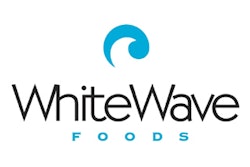
A key component of most packaging, the closure was first designed to protect — keeping food or beverage fresh and unaffected by air or contaminants. From this original function, however, the closure has developed over the years into a powerful tool that companies also increasingly employ to connect with, engage and inform consumers, ultimately building greater loyalty for their brands.
Just as the closure has evolved, so have the needs of brands to leverage the technology effectively, and today they look to their suppliers to better understand the capabilities and value of the different solutions available. To get a better understanding of the issues surrounding closures, and how best to deal with them, Food Manufacturing spoke with experts with different responsibilities at CROWN Closures Americas, a business unit of Crown Holdings, Inc.
Q: How do I identify the best closure style for my product?
Eric Meyer, Vice President of Sales: Many customers don’t realize that the type of food or beverage being packaged is just the starting point for selecting the right closure. It’s also critical to identify goals for the closure’s performance. For example, beyond keeping products fresh and being easy to open, does the closure need to serve as a promotional tool? Does it need to differentiate the product on store shelves?
Specific filling requirements also need to be factored into the decision making process. Is the product filled hot, cold or retorted? What are the filling rates? Understanding whether the application is vacuum or non-vacuum and whether pasteurization or retort is required as part of that process is also important. Once these critical details are confirmed, fillers will be in a better position to identify the best closure for the job.
Q: I have a new food product to package. How can I determine which closure is most compatible with my specific application?
Galen German, Manager, U.S. Metal Closures Development: Factors like pH, sulfur content and processing conditions all influence the final closure choice. Once you have confirmed these elements, your closures supplier should begin a series of tests to determine compatibility. Tests should include sealing the product with the selected closures, processing the sealed packages in the same manner as the designed commercial process and storing the packages in the same kind of conditions that the product might be expected to encounter during its life cycle.
It is important to make frequent checks on the package in the testing phase so that the filler gets good data on how the closure will perform on the shelf. At Crown, all of this research, development, engineering and testing is conducted at our Technical Center in Lancaster, Ohio. If, during the evaluation process, a problem arises, we can help the customer identify the reason for the issue and provide them with options to achieve their objectives.
Q: I have a concept for a design but I need to see what it looks like on a closure before I make a final decision. How does the design process work?
Jan DeLisio, Graphics Department: Before we get into the actual design process, let’s talk about some basics. One common misconception is that images drawn on paper or designed on the computer will come out looking exactly the same when printed on metal. In reality, images need to be separated to identify each color used and determine if we can print a single layer to achieve the same hue on metal or if we’ll need to blend the layers together to achieve the same result. When printed on metal, final graphics are of extremely high quality. This is a key advantage of metal over plastic.
Q: We want to launch a new marketing campaign using closures and as part of this effort, we would like to incorporate several different designs. Does this add a lot of complexity to the production process?
Sheila Heath, Director of Marketing:Not necessarily. If a brand plans to use several different images for a campaign, but wants to have them all printed on the same type of closure, Crown can lay multiple designs on a single sheet provided that the graphics share the same color palette. If the graphics contain different colors, it is then necessary to create independent printing plates for each image to get the desired results. The complexity of the project also increases if the customer is looking to print different images on different kinds of closures. Regardless of the intricacy of the project, however, we work with our customers so they can identify the most time- and cost-efficient solution to achieve their goals.
Closures are great billboards for marketing campaigns because of their versatility. In addition to the high quality printing that can appear on the exterior of the closure, we can also print under the cap to support contests and giveaways. Several brands have even used this space to feature QR codes and engage consumers.
Q: We’re changing the closure on our packaging. Do I need to be worried about the impact making this change will have on production?
Jerry McGee, Closures Services Manager: That depends on how much of a change you will be making. For example, are you changing the base material of the closure (i.e. moving from plastic to a metal or composite closure)? Or are you simply changing from one type of metal closure to another? If changing closures also requires a new supplier, there’s another level of impact to consider.
At Crown, we produce a variety of metal and composite closures, and switching from one style to another does not necessarily require significant investment in new equipment. However, in most situations where there is a need for a new process or equipment, our team is not only able to help source the necessary equipment for the capping machine to apply the new closure, but we also work with our customers to help them prepare so that the change is as efficient as possible. Our service team also conducts regular facility visits to advise customers of any problems that may arise and answer questions.
About Crown Holdings, Inc.
Crown Holdings, Inc., through its subsidiaries, is a leading supplier of packaging products to consumer marketing companies around the world. World headquarters are located in Philadelphia, PA. For more information, visit www.crowncork.com.
For more food industry news and information, subscribe here and follow us on Twitter, Facebook or LinkedIn.























